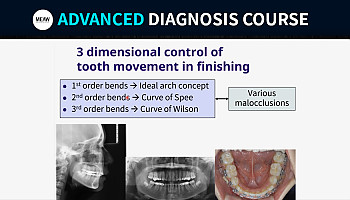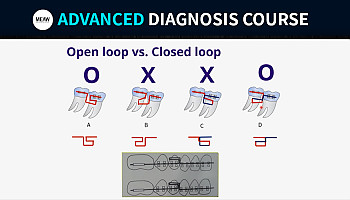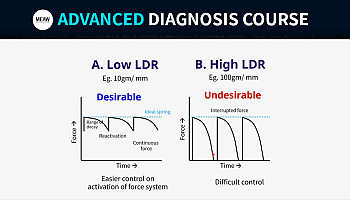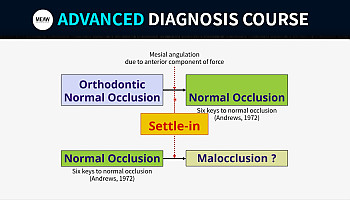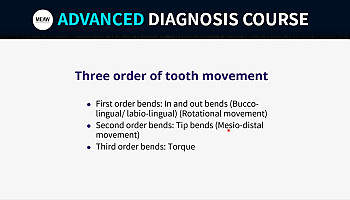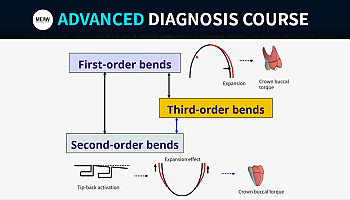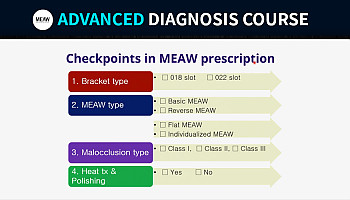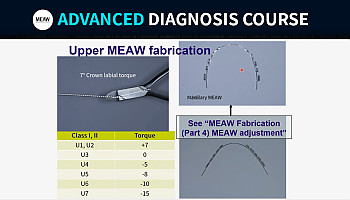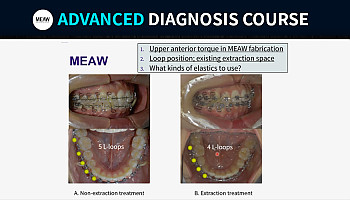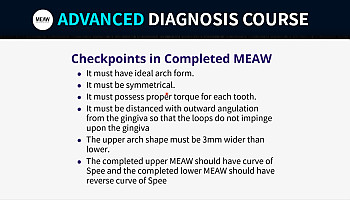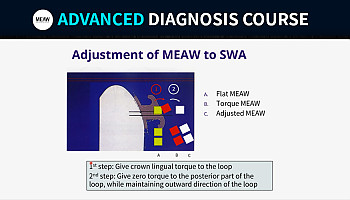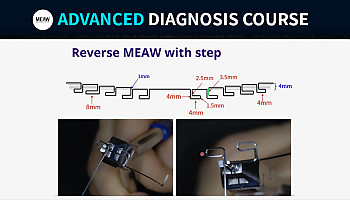15,400
1) Exptected tooth movement during finishing stage
2) 3-dimensional tooth movement during finishing
3) Tooth movement in the dentition
2) 3-dimensional tooth movement during finishing
3) Tooth movement in the dentition
18,700
1) Basic L-loop
2) Open loop vs closed loop
3) Vertical tooth movement
4) Horizontal tooth movement
5) Midline deviation treatment
2) Open loop vs closed loop
3) Vertical tooth movement
4) Horizontal tooth movement
5) Midline deviation treatment
18,700
1) LDR: low vs high
2) Five major parameters for varying LDR
3) LDR in MEAW
2) Five major parameters for varying LDR
3) LDR in MEAW
18,700
1) Orthodontic normal occlusion and normal occlusion
2) Orthodontic normal occlusion
2) Orthodontic normal occlusion
24,200
1) First-order bends
2) Second-order bends
3) Third-order bends
4) Orthodontic force system
2) Second-order bends
3) Third-order bends
4) Orthodontic force system
15,400
1) First-order bends in finishing
2) Second-order bends in finishing
3) Third-order bends in finishing
2) Second-order bends in finishing
3) Third-order bends in finishing
22,000
1) MEAW prescription to lab
2) Requsite of MEAW prescription: Ceph., panorama and model
3) Checkpoints in MEAW prescription
2) Requsite of MEAW prescription: Ceph., panorama and model
3) Checkpoints in MEAW prescription
14,300
1) Anterior torque: crown lingual torque
2) Marking and loop position
3) Lower MEAW fabrication
2) Marking and loop position
3) Lower MEAW fabrication
15,400
1) Anterior torque: crown labial torque
2) Canine guidance
3) Marking and loop position
4) Upper MEAW fabrication
2) Canine guidance
3) Marking and loop position
4) Upper MEAW fabrication
18,700
1) Upper anterior torque in MEAW fabrication
2) Loop position: existing extraction space
3) Crown lingual inclination in the posterior teeth
2) Loop position: existing extraction space
3) Crown lingual inclination in the posterior teeth
23,100
1) Sequnces of MEAW adjustments
2) First-order bends control in MEAW
3) Third-order bends control in MEAW
4) Second-order bends control in MEAW
2) First-order bends control in MEAW
3) Third-order bends control in MEAW
4) Second-order bends control in MEAW
11,000
1) Upper anterior torque in upper MEAW
2) Upper posterior torque in upper MEAW
3) Lower anterior torque in lower MEAW
4) Lower posterior torque in lower MEAW
5) Check and measuring torque
2) Upper posterior torque in upper MEAW
3) Lower anterior torque in lower MEAW
4) Lower posterior torque in lower MEAW
5) Check and measuring torque
18,700
1) Ordinary MEAW vs reverse MEAW
2) Indications of reverse MEAW
3) Fabrication of reverse MEAW
2) Indications of reverse MEAW
3) Fabrication of reverse MEAW
